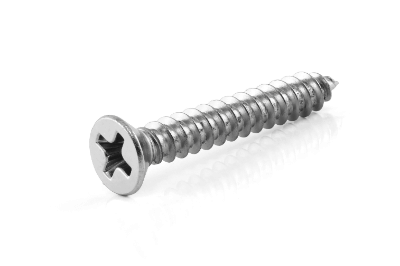What Is a Waterproof Screw?

A waterproof screw has a waterproof shield ring attached to the seating surface (behind the head of the screw) to block water leakage.
Since there is a small gap between the screw’s seating surface and the object to be fastened, it is an easy entry path for water and organic solvents. The shield ring of a waterproof screw is highly water-resistant and airtight, and can close the gap between the seating surface and the object to be fastened. This is why they are used to protect electronic circuit boards in home appliances from water splashes and to prevent rainwater from penetrating machinery used outdoors.
Uses of Waterproof Screws
Waterproof screws are used to protect precision instruments and water-sensitive equipment from water immersion.
In particular, waterproof screws are indispensable for the following equipment:
- Precision equipment vulnerable to water immersion (personal computers, measuring instruments, medical equipment)
- Equipment used outdoors (weather instruments, solar power generation equipment)
- Equipment intended to be used in places where water is splashed (dishwashers)
If waterproof packing and screws are purchased separately, the size may not fit or the seal may be weak. Therefore, waterproof screws with a set of waterproof shielding rings are used.
Principle of Waterproof Screws
Waterproof screws are designed to be exposed to water, so the main body (screw part) is made of rust-resistant SUS. A waterproof shield ring that matches the size of the body is attached to the seat (back side of the head), which serves to seal the gap between the screw and the object to be fastened.
The shield ring is generally made of nitrile rubber (synthesized by polymerization of acrylothrin and 1,2-butadiene). Nitrile rubber can withstand solvents such as gasoline and alcohol as well as water, and can be used to prevent the penetration of oil and grease. However, it is corroded by ethyl acetate and ether, so if resistance to these organic solvents is required, use fluoroplastic (PTFE).
The procedure for using waterproof screws is as follows:
- Make sure the shield ring and screw diameters match (they are usually sold as a set, so the diameters will match).
- Fit the shield ring on the seat surface and push it in securely all the way to the back.
- Pass the shield ring through the object to be fastened to prevent it from coming off. In the case of a bolt type, secure it with a washer and nut.
This will seal the gap between the seat and the object to be fastened with the shield ring, preventing water from entering the equipment.
Main Materials and Surface Treatments of Waterproof Screws
The main material used for waterproof screws are stainless steel.
As described in the section on proper use, the tightening torque should be carefully selected to obtain sufficient tightening due to the presence of the shield ring. Particularly when designing equipment where human lives are at stake, sufficient consideration should be given.
Electrical corrosion is also an important factor. If the material of the waterproof screws differs from the material of the mating mechanical element or the object to be fixed, a difference in metal potential may result in corrosion. Particular attention should be paid to aluminum and stainless steel.
The surface treatment of waterproof screws should be selected according to the corrosion countermeasures against electric corrosion mentioned above, the quality of appearance, and the price.
Proper Use of Waterproof Screws
Waterproof screws are basically intended for use in areas that are exposed to water, such as external covers. If not used properly, the mating nut may be damaged, or the product or equipment assembled with the waterproof screws may be damaged.
To prevent this, the basic approach is as follows:
- The tightening force must be within the allowable range so that the waterproof screws (especially the shield ring) and the mating member will not break.
- The repetitive force (due to vibration, etc.) applied to the waterproof screws and the mating material must be within the allowable range.
- The seating surface of the waterproof screws (the surface that contacts each other, not the surface that the tool touches) must be within the allowable range. The pressure exerted on the seating surface of the waterproof screws (the surface that contacts each other, not the surface that the tool touches) shall not cause the object to be tightened (metal, wood, etc.) to cave in.
- The object to be fastened shall not be broken by fastening waterproof screws.
Loosening of Waterproof Screws
Even if waterproof screws are used properly, gradual loosening of waterproof screws can cause the object to be fastened to become dislodged, which may lead to a serious accident involving human life, depending on the object to be fastened.
Loosening can be caused by the following two factors:
- Repeated vibration applied to the waterproof screws
- Repeated heat generation to the waterproof screws from the outside air temperature or from the object itself to which it is fastened.
Tightening waterproof screws strongly is effective in preventing loosening, but it can also cause waterproof screws to break or destroy the screw holes. Especially when designing equipment that involves human life, it is necessary to calculate the allowable range of tightening force, as described in the section on proper use of waterproof screws.
When retightening screws in purchased products, if there is already a defined tightening force regulation, it is sufficient to tighten the screws accordingly.
Another method to prevent loosening is to use a loosening adhesive.
Since the principle of anti-looseness is friction, it is actually difficult to guarantee that it will never loosen. Sufficient testing is also something to consider.